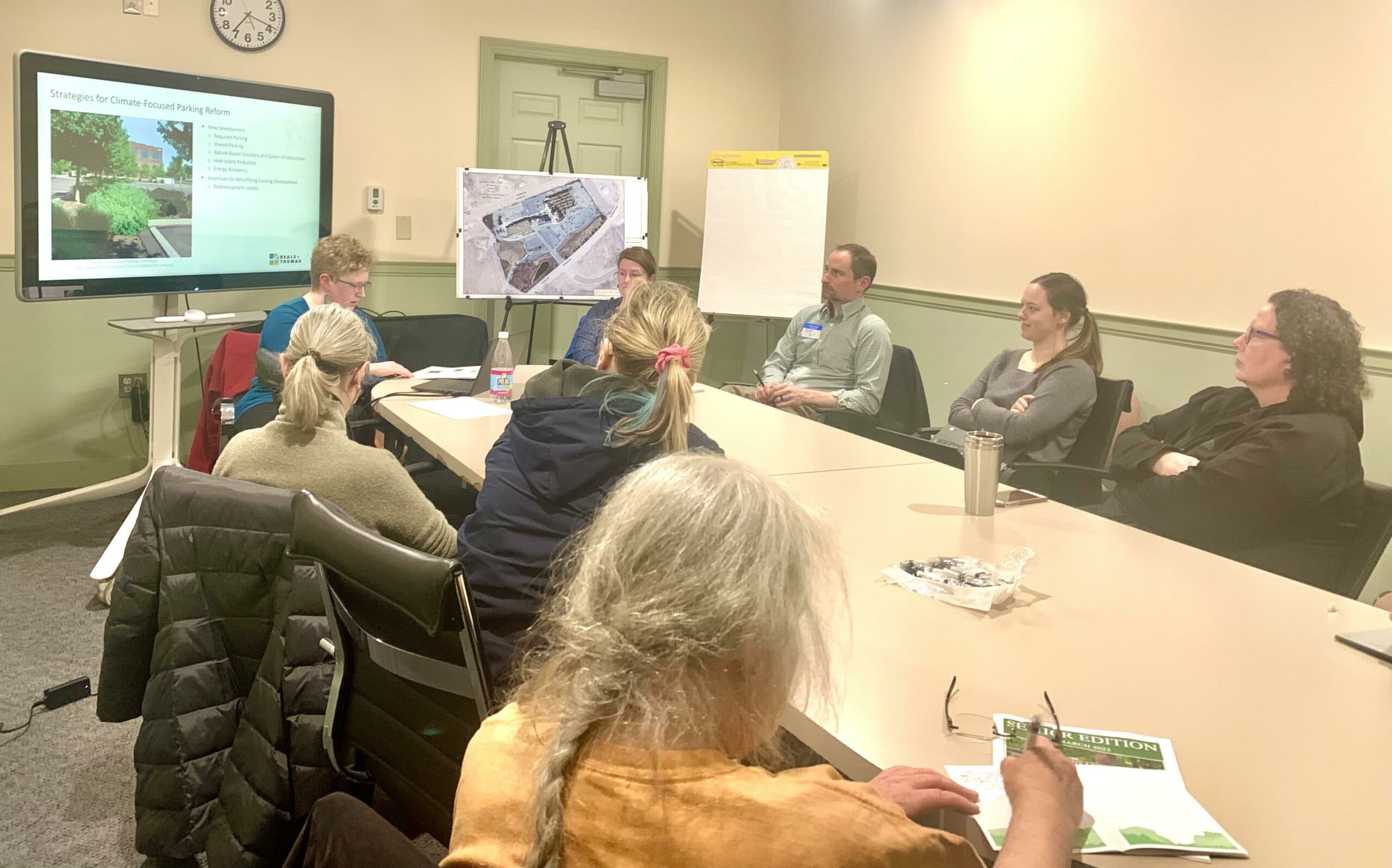
SHREWSBURY – With each new planning and economic development initiative, the town of Shrewsbury takes another step toward reducing the community’s carbon footprint and, overall, being more environmentally conscious.
The latest “green” endeavor is connected to updating the town’s parking bylaws outside the Town Center District.
Last August, Shrewsbury received a $90,000 grant from the Municipal Vulnerability Preparedness (MVP) program to update the parking requirements in town bylaw. The objective is to emphasize green infrastructure and nature-based design.
Last week, the Planning and Economic Development Department hosted a pair of public input sessions to discuss sustainable parking requirements. They were facilitated by consultants from Beals and Thomas.
According to information provided by Director of Planning and Economic Development Christopher McGoldrick the objectives of the parking regulatory update are to “prevent further excessive development of impervious surface lots and to incentivize owners of existing overbuilt surface lots to reduce and replace their excess impervious surfaces with green infrastructure in order to decrease vulnerabilities related to increased extreme weather and heat events.”
According to Mary Kate Schneeweis, senior environmental specialist for Beals and Thomas, an excess of parking space can adversely impact the environment and the community in multiple ways.
“What we’re looking to [do] is to reduce the amount of parking square footage,” said Schneeweis. “Excessive parking space, with impervious surface, can cause problems with drainage and lead to flooding. It encourages more auto travel. It can contribute to social inequality and disincentivize economic development.”
Residents weigh in
As part of the town’s MVP report from 2018, residents had expressed concerns regarding a significant increase in flooding along Route 9 (Quinsigamond watershed), as well as Oak Street, Lake Street, Fruit Street, Maple Avenue and Route 20.
Another issue Schneeweis brought up was the “heat island” effect. This effect occurs on warm days when an asphalt surface in a parking lot absorbs and remits the heat, magnifying the temperature on and near the surface to a potentially dangerous level.
“According to the Shrewsbury MVP report, by 2050 Shrewsbury could have five times as many 90-degree days each year,” said Schneeweis.
One of the questions brought forth at the public input session was regarding the zoning or tax incentives the town may offer a property owner to reduce the size of its parking footprint.
As an exercise, the consultants had the residents go over several detailed neighborhood maps of the community and asked them to mark areas where they felt more parking was needed, where parking was sufficient and where there was excess, unused parking that could be reduced.
The report and recommendations being compiled by Beals and Thomas are expected to result in a future Town Meeting warrant article asking residents to amend the existing parking zoning bylaw.
RELATED CONTENT
Shrewsbury launches Town Center Multimodal Study














